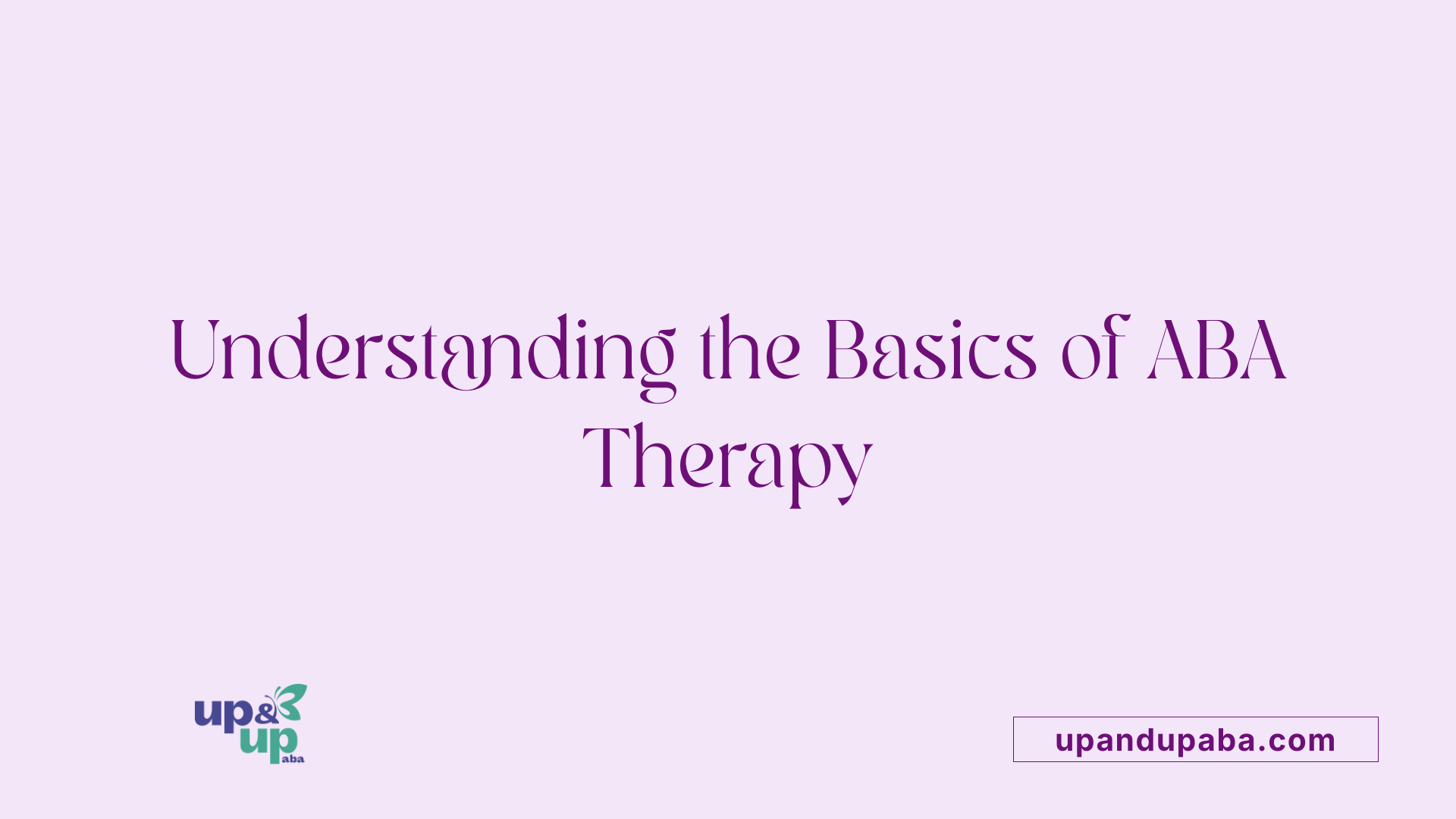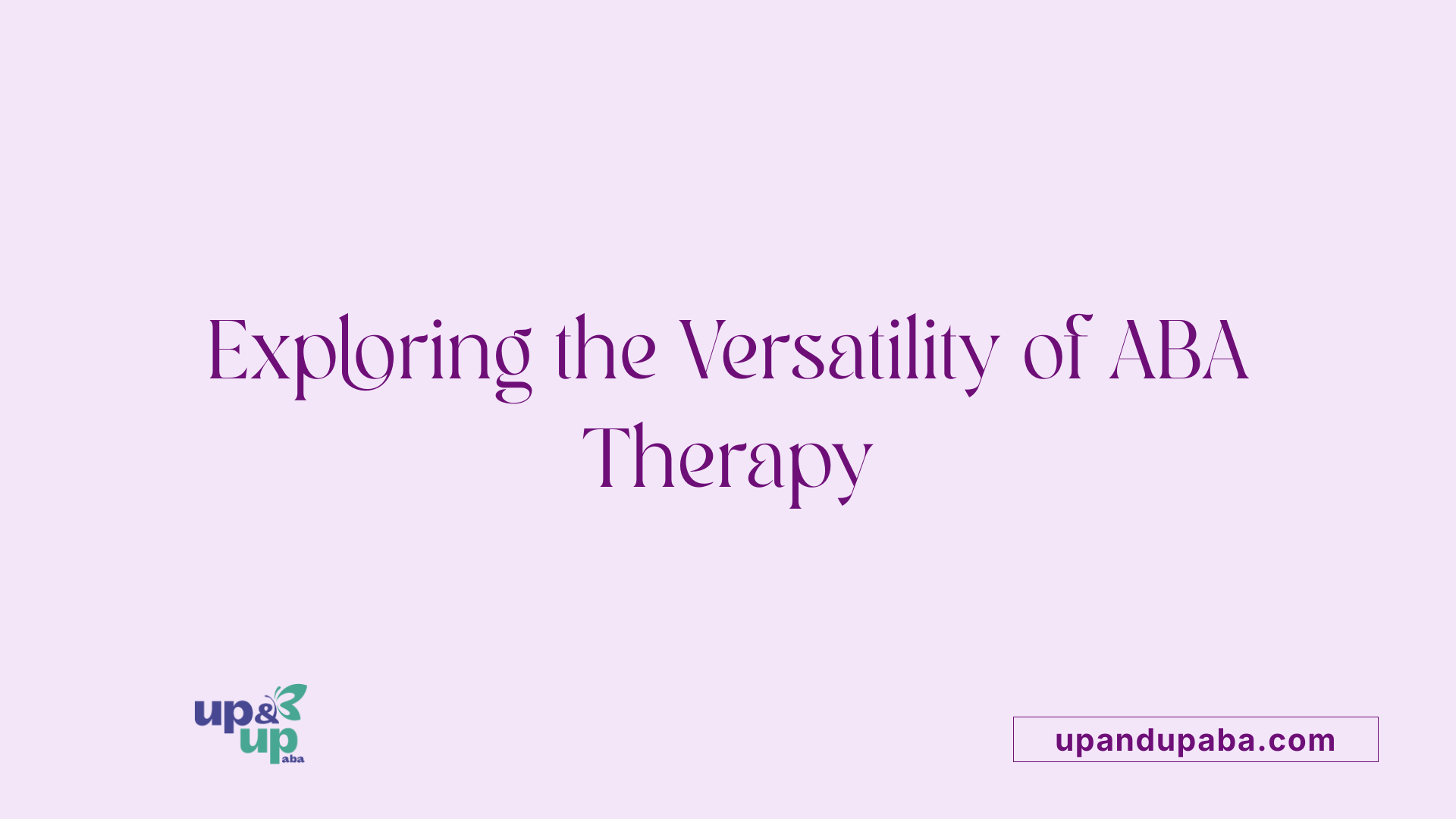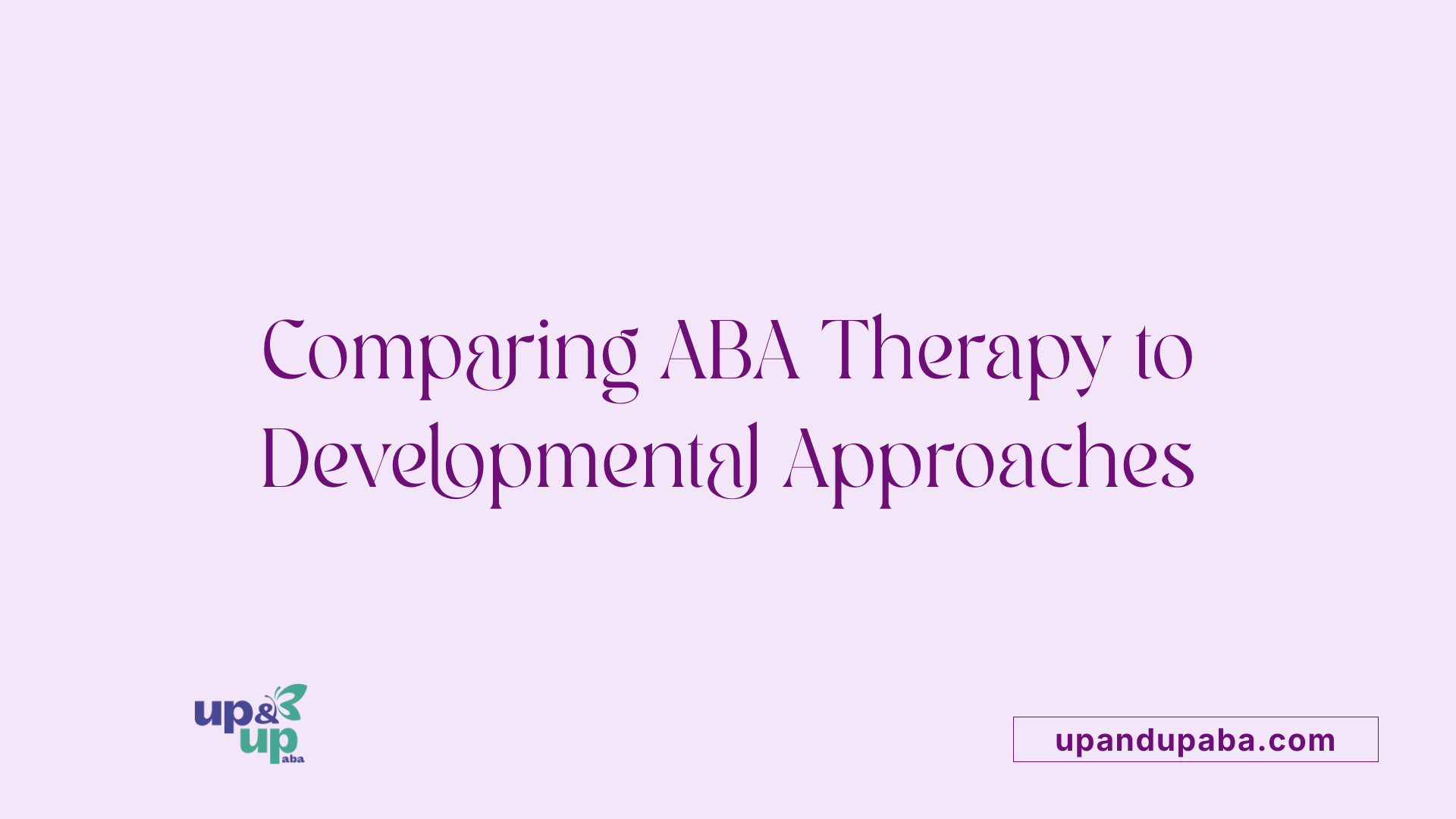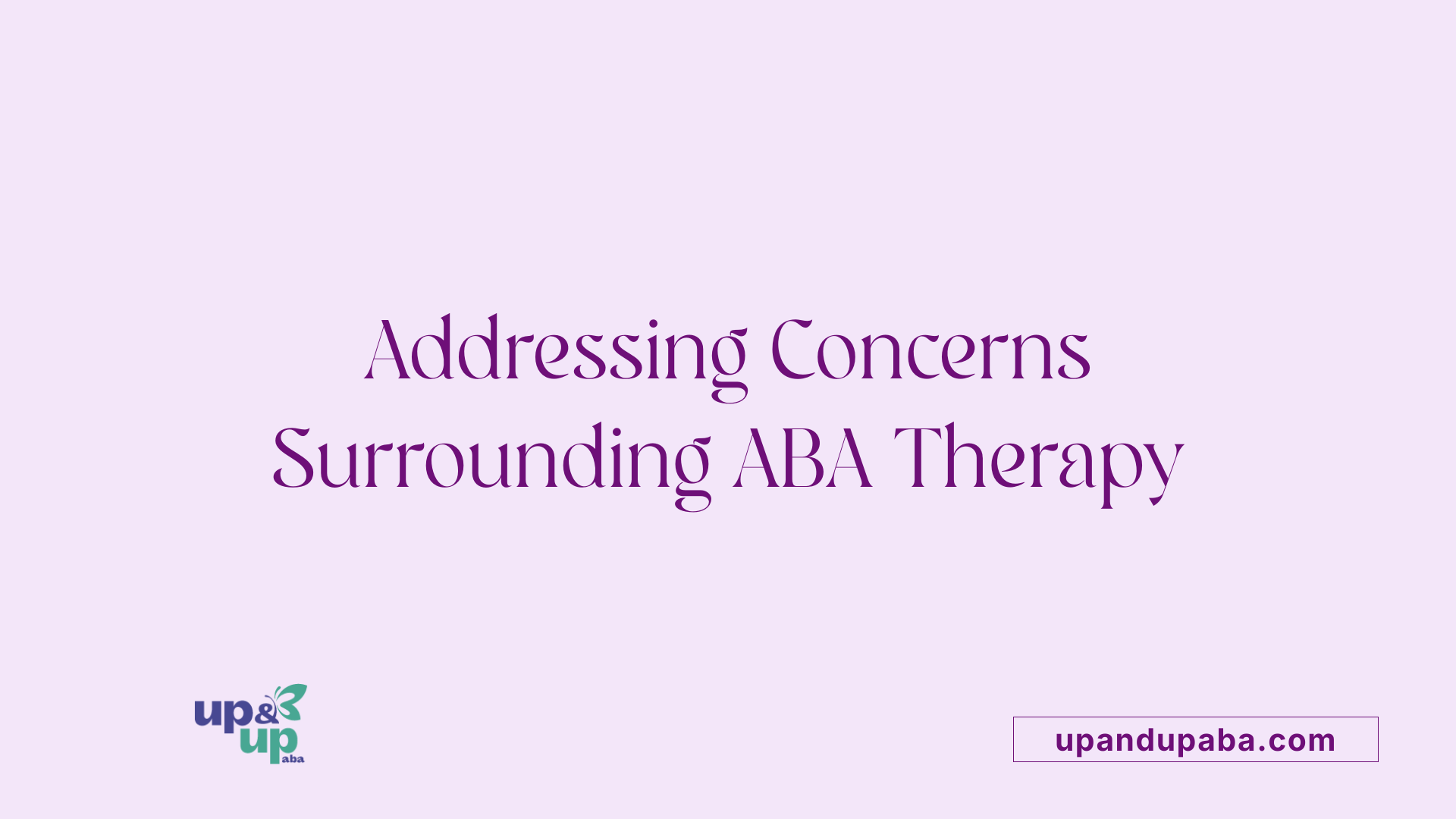ABA Therapy for Developmental Therapies
Understanding ABA Therapy and Its Role in Developmental Interventions

Introduction to ABA Therapy
Applied Behavior Analysis (ABA) therapy has emerged as one of the leading interventions for individuals with autism and other developmental disorders. Rooted in the science of learning and behavior, ABA therapy aims to promote positive behaviors and diminish negative ones across various domains, including communication, social skills, and daily living skills. This narrative explores the foundations of ABA therapy, its methodologies, effectiveness, and its place within the broader spectrum of developmental therapies.
Foundations of ABA Therapy

What is ABA therapy for autism?
Applied Behavior Analysis (ABA) therapy is a science-based approach aimed at helping children with autism develop essential skills while reducing problematic behaviors. It uses positive reinforcement to encourage desired behaviors and focuses on understanding the relationship between antecedents, behaviors, and consequences.
ABA therapy is tailored to meet individual needs, with programs designed by board-certified behavior analysts (BCBAs). This customization ensures that each program aligns with the child's unique strengths, challenges, and interests.
Modern ABA practices emphasize engagement and fun in learning, contrasting with some criticisms regarding historical methods. Research consistently supports its effectiveness, particularly when implemented early and intensively, leading to significant improvements in communication, social skills, and daily functioning for children on the autism spectrum.
Key Components of ABA Therapy
Science-based Approach: Rooted in the principles of behaviorism, ABA focuses on measurable behaviors and proactively addressing various challenges.
Positive Reinforcement: This strategy involves rewarding desired behaviors to encourage their repetition, promoting a positive learning environment.
Board Certified Behavior Analysts: Qualified professionals who design and oversee individualized therapy programs, ensuring that interventions are effective and tailored to each child's needs.
Scope and Application of ABA Therapy

What disorders can be treated with ABA therapy?
ABA therapy is effective for a variety of disorders, most notably autism spectrum disorder (ASD). However, its application extends beyond autism to include:
- Intellectual Disabilities: Assists with behavior modification and skill development.
- Developmental Delays: Targets specific skills to encourage independence.
- Behavioral Disorders: Helps manage and alter undesirable behaviors.
- Anxiety Disorders: Teaches coping strategies to manage anxiety.
- Attention Deficit Hyperactivity Disorder (ADHD): Improves focus and organizational skills.
- Obsessive-Compulsive Disorder (OCD): Addresses compulsive behaviors through positive reinforcement.
- Eating Disorders: Supports healthier eating habits through behavior management.
The therapy focuses on understanding and modifying behaviors through systematic observations and personalized interventions. A significant aspect is the use of positive reinforcement, promoting desirable behaviors while constructively addressing negative behaviors. Collaboration with parents and educators is crucial in tailoring treatment plans.
Is ABA therapy only for autism?
No, ABA therapy is not exclusively for autism. While it is best known for treating autism spectrum disorder, it has demonstrated effectiveness in addressing various behavioral and developmental issues in both children and adults. This includes conditions like:
- Attention Deficit Hyperactivity Disorder (ADHD)
- Obsessive-Compulsive Disorder (OCD)
- Oppositional Defiant Disorder (ODD)
- Post-Traumatic Stress Disorder (PTSD)
- Traumatic Brain Injury
The principles of ABA are versatile and can be adapted for varied fields such as education, organizational behavior, and even parenting techniques. This adaptability underscores the therapy's broad applicability in enhancing functional and social skills across different age groups and conditions.
| Disorder | ABA Therapy Benefits |
|---|---|
| Autism Spectrum Disorder (ASD) | Skill development, behavior modification |
| Intellectual Disabilities | Enhanced functioning and independence |
| Developmental Delays | Targeted skill-building |
| ADHD | Improved focus and behavior management |
| OCD | Reduction of compulsive behaviors |
| Eating Disorders | Promotion of healthy eating habits |
| Traumatic Brain Injury | Behavioral management and adaptation strategies |
The scope of ABA therapy speaks to its effectiveness and versatility in supporting individuals across a spectrum of disorders, helping to facilitate positive behavioral changes and enhance the quality of life.
ABA vs. Developmental Therapy

How does ABA differ from developmental therapy?
ABA (Applied Behavior Analysis) and developmental therapy are distinct in their approaches and underlying philosophies.
- Focus on Learning: ABA is centered on compliance training, structuring repetitive tasks for children to encourage mastery. This method stresses task-oriented learning, where children are taught to follow given directions precisely.
- Dynamic Thinking: In contrast, developmental therapies promote curiosity and engagement, allowing for a more flexible learning process. They encourage children to explore and think dynamically, with mistakes being viewed as critical teaching moments instead of failures.
Philosophical foundations
ABA’s core philosophy revolves around modifying behavior through reinforcement and structured learning processes. The methods used focus on observable behaviors and their modification. Developmental therapies, however, prioritize emotional regulation and sensory considerations, catering to the holistic development of the child.
Role in treatment plans
Treatment plans formulated through ABA are often highly structured and tailored to specific behavioral goals, adhering closely to data-driven results. Conversely, developmental therapies may adopt a more fluid approach, incorporating the child's interests into the learning process and fostering broader developmental skills like social interaction and emotional intelligence. Understanding these differences ensures parents can choose the most suitable intervention for their child’s unique needs and promote better outcomes.
Effective Techniques in ABA Therapy

What techniques are used in ABA therapy?
ABA therapy utilizes a range of effective techniques aimed at enhancing behaviors in children, particularly those diagnosed with Autism Spectrum Disorder (ASD). Here are some of the key methodologies employed in ABA:
Positive Reinforcement: This foundational strategy involves rewarding desirable behaviors to encourage their recurrence. Rewards can range from verbal praise to tangible rewards, effectively boosting motivation and self-esteem.
Discrete Trial Training (DTT): This structured approach breaks down complex skills into small, manageable steps. For each correct response, a child receives positive reinforcement, making the learning process systematic and clear.
Antecedent-Based Interventions (ABI): In this method, the environment is modified to reduce distractions, helping to create an optimal learning context that minimizes problem behaviors.
Functional Communication Training (FCT): FCT focuses on teaching children how to communicate their needs functionally rather than resorting to undesired behaviors. This is crucial for improving interaction and reducing frustration.
Pivotal Response Training (PRT): PRT targets pivotal skills, such as motivation and communication, allowing children to generalize their learning across various situations and contexts.
Modeling: In this technique, desired behaviors are demonstrated to the child, who is then encouraged to replicate them, facilitating learning through observation.
These evidence-based practices are adaptable to each child's unique needs, often incorporating the active involvement of parents and caregivers to reinforce learning in natural settings.
Critiques and Controversies of ABA Therapy

Can ABA therapy have negative outcomes?
Yes, ABA therapy can have negative outcomes. Reports indicate that many individuals have experienced trauma and emotional distress as a result of the therapy, particularly when it is not administered appropriately or by poorly trained therapists. Misalignment between family expectations and the therapy can lead to ineffective outcomes, and there are accounts of children developing PTSD and low self-esteem from their experiences.
What are the potential drawbacks of ABA therapy?
The environment in ABA clinics has also been criticized as overwhelming and anxiety-inducing, which can further harm autistic individuals. Critics point out that some ABA methods historically involved aversive techniques, which have raised significant ethical concerns.
Are there risks of misapplication in ABA therapy?
Misapplication of ABA techniques, particularly when applied rigidly without considering individual needs, can lead to hurtful experiences. The importance of training and continuous assessment is crucial in mitigating these risks.
What do community concerns highlight?
Community concerns encompass fears around the lack of personalized care and the possibility that inappropriate approaches may inadvertently reinforce harmful behaviors or create dependency on structured environments. The need for transparency and ethical practice within ABA programs is paramount to restoring trust among families and advocates.
Real-World Examples of ABA Techniques
What are some examples of ABA therapy?
ABA therapy employs various techniques aimed at enhancing positive behaviors and addressing challenges in individuals with autism and other developmental disabilities. Here are several noteworthy examples:
Positive Reinforcement: This is a fundamental strategy where a reward follows a desired behavior, encouraging its repetition. For example, a child may receive verbal praise or a small token for using words instead of gestures to communicate.
Discrete Trial Training (DTT): This method breaks down skills into small, manageable tasks. Each task is taught in a structured way, providing a clear context and steps to follow, which allows for focused learning.
Antecedent-based Interventions (ABI): These interventions modify the environment to make it easier for the child to learn new behaviors while minimizing distractions and triggers for challenging behaviors.
Functional Behavior Assessment (FBA): This assessment identifies the underlying reasons for specific behaviors, facilitating the development of tailored interventions that address both the behaviors and their causes.
Functional Communication Training (FCT): This intervention teaches individuals appropriate methods of communication, helping them express their needs effectively and reducing frustration.
Picture Exchange Communication System (PECS): Often used with non-verbal children, PECS allows them to communicate their needs using images, enhancing their ability to express themselves.
These diverse applications of ABA illustrate its adaptability, focusing on important skill development in communication, social interaction, and daily living.
Exploring Developmental Therapies for Autism
What is developmental therapy for autism?
Developmental therapy for autism is a comprehensive approach aimed at enhancing various skills in children on the autism spectrum, particularly during their formative years. This approach combines multiple specialized therapies, each designed to address specific developmental challenges.
- Occupational Therapy: Targets everyday skills such as sensory processing and self-care, making children more independent.
- Speech-Language Therapy: Focuses on improving communication abilities, including expressive language through gestures and speech.
- Music Therapy: Uses music as a tool to enhance social connections, sensory integration, and cognitive control.
- Physical Therapy: Concentrates on improving gross motor skills and overall coordination for safer navigation in one’s environment.
Cortica adopts a multidisciplinary approach, integrating these developmental therapies with medical support and applied behavior analysis. This combination creates personalized care plans tailored to each child's unique strengths and needs.
Multidisciplinary approach
The integration of various therapies under a multidisciplinary framework allows for a holistic view of a child's development. By collaborating across disciplines, therapists can address overlapping goals and provide comprehensive support. This results in enhanced outcomes for children, fostering development in speech, social skills, and daily living skills.
Cortica's contribution
Cortica specializes in providing developmental therapies tailored for children with autism. Their offerings include Occupational Therapy, Speech-Language Therapy, Music Therapy, and Physical Therapy, either at their centers or through telehealth options. Each therapy is designed to build specific skill sets, and Cortica’s personalized approach aims to achieve measurable improvements in the children they serve.
Conclusion
ABA therapy stands as a critical component in the landscape of developmental therapies, offering evidence-based interventions that can substantially improve the lives of individuals with autism and other developmental disorders. While its methods have continuously evolved since the 1960s, the emphasis on individualized, positive reinforcement-driven approaches remains central to its success. As parents and caregivers navigate through the options of therapeutic interventions, understanding both the strengths and critiques of ABA therapy is essential for making informed decisions that align with the unique needs of their children. The integration of ABA within broader developmental therapy frameworks, such as those offered by Cortica, highlights a promising direction in personalized and multi-faceted care for developmental challenges.
References
- Applied Behavior Analysis (ABA) - Autism Speaks
- Behavioral Treatment of Autism and Other Developmental ... - BACB
- Developmental Therapies
- ABA Therapy for Developmental Disabilities
- Setting ABA Therapy Goals for Children - Goldstar Rehabilitation
- The Impact of ABA Therapy on Developmental Health
- Applied Behavior Analysis (ABA) - Cleveland Clinic



